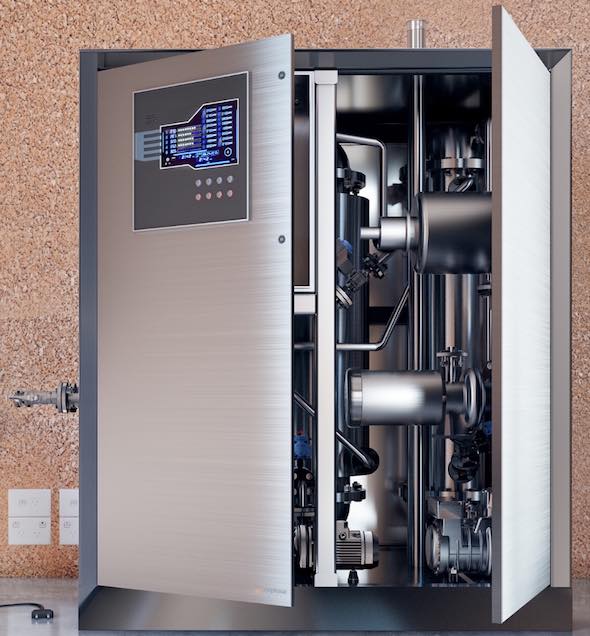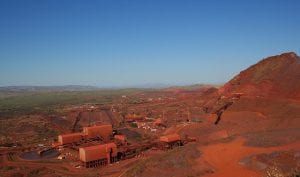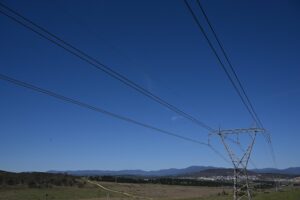A new competitor has entered the distributed generation market and is taking on solar and battery storage with a twist on cogeneration technology that can produce heat, hot water and 24-hour power – as well as oxygen and hydrogen.
Co-developed by the University of Newcastle and Infratech Industries – a company also known for its floating solar technology – the so-called Energy On Demand system was unveiled on Thursday, with the official inauguration of a 30kW commercial demonstration plant at the University’s Newcastle Institute for Energy and Resources (NIER).
The technology is initially targeting commercial and industrial users, but also has designs on the residential space.
As the video below explains, the scaleable technology – which has been backed by a CSIRO grant – uses thermo-chemical energy, via a “naturally occurring particle mixture” that is stored in replaceable cartridges.
We weren’t able to get to the bottom of what exactly this particle mixture is made up of, but Infratech says it is not harmful to the environment and, once spent, leaves behind a sort of non-toxic dust.
Using a University of Newcastle patented process called CLAS (Chemical Looping Air Separation), air is passed through the particle mixture to generate heat, which then spins a turbine, which in turn generates power.
The kicker, says Infratech CEO Rajesh Nellore, is that as well as generating power the system can generate potential revenue streams for users by creating hydrogen and oxygen as saleable byproducts.
This would be ideal, the company suggests, for medical therapy customers where respiratory diseases are treated with oxygen. It could also contribute to a hydrogen network for fuel cell cars in the future. Systems can run off-grid, or on, and range in capacity from 15kW to 1000kW.
And while Infratech has not yet got to costing the systems, Nellore believes that given the associated revenue generating possibilities, and savings from avoided heating and cooling costs, Energy On Demand could offer a customers a faster return on investment than solar and battery storage – perhaps even in the ballpark of a couple of years.
Another advantage, is that the system can supply 24-hour power without the need for storage, although in this mode it needs an external heat source to maintain reactions within the particle mixture. According to Dr Nellore, this can be supplied either by natural gas, electricity from renewable energy sources, by the system itself, or any combination thereof.
The system at the University of Newcastle uses gas, which project leader Behdad Moghtaderi describes as the most reliable source for the required temperature balancing.
“(The CLES system) features a number of unique characteristics which make it distinct,” said Professor Moghtaderi, whose own invention is at the core of the technology, which is patented by the University of Newcastle.
“It’s a poly-generation process capable of simultaneous production of heat, power, oxygen, hot water and chilled water for air-conditioning. As a result, the overall efficiency of the process is in excess of 90 per cent.”
Another feature of the system – and one that may appeal to governments seeking to address security of supply issues – is that it can also run for pre-defined hours at a time, such as during peak power periods.
According to Infratech, it can also be programmed to produce only power and oxygen, or a combination of both along with heating, cooling, hot water and hydrogen.
“The application of this technology can meet the needs of both developed and developing economies,” said Infratech’s Nellore. “It’s a step-change in technology from what is currently available.”
As for the demonstration plant, that is set to be shipped to a permanent customer site in Australia, which will be chosen from “a pool of interested companies.” We’ll keep you posted.
Nellore told RenewEconomy on Wednesday that the 30kW system could meet the energy needs of a housing development with 30-40 residences, or a “small hospital.”
Production of smaller units for installation at individual homes – roughly the size of a fridge, and resembling the artist’s rendering above – was about 18 months away, he said.












